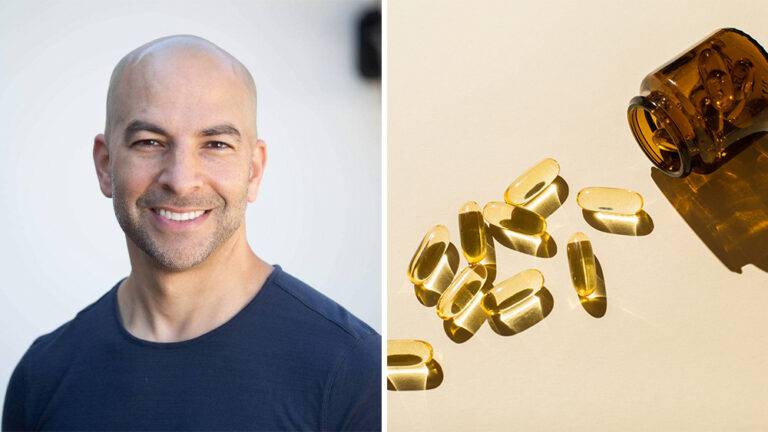For years leading natural doctors, health experts and alternative cancer clinics have been pointing to the amazing healing benefits of an antioxidant group called flavonoids. I won’t put myself in that class of medical expert, but my team and I have certainly agreed and reported on many of their findings over the years.
Now, in a world first, conventional health experts from across the globe are starting to listen. In fact, they’re urging you to eat certain foods to get more of these plant compounds, especially one called flavan-3-ols.
At long last they’re agreeing that eating foods high in flavan-3-ols can boost your health by lowering blood pressure, reducing cholesterol, and controlling blood sugar levels.
Let’s take a closer look at these compounds and the foods in this new “food group.”
Flavan-3-ols, a subclass of flavonoids, is one example of plant chemicals called bioactives. Bioactives are defined as: “Constituents in foods or dietary supplements, other than those needed to meet basic human nutritional needs, which are responsible for changes in health status.”
At long last endorsed by Academy of Nutrition and Dietetics
Finally a group of internationally recognized scientific experts within the Academy of Nutrition and Dietetics has concluded that the evidence is strong enough to provide that official intake recommendation for flavan-3-ols.
After reviewing 172 studies, a different expert panel now recommends getting an adequate amount of flavan-3-ols in our daily diet.
In their review they wrote: “…diet quality plays a major role in cardiometabolic disease-free life expectancy… the potential impact of migrating dietary patterns toward inclusion of key foods containing bioactive compounds should not be underestimated.
“A large and constantly evolving body of research suggests that dietary bioactives play a key role in human health maintenance as well as disease prevention and mitigation, particularly during the aging process,” they continued.
Good for blood sugar, circulation, and metabolism
Decades of research, the review found, have shown flavan-3-ols reduce the risk of heart disease, stroke, and type II diabetes. They achieve this by reducing systolic (upper) blood pressure, improving blood flow, lowering total cholesterol, raising HDL “good” cholesterol, and controlling blood sugar. They also act as antioxidants to protect against cellular damage with aging.
Dr. Kristi Crowe-White, who led the group, explained, saying, “Increasing consumption to 400 to 600 milligrams of dietary flavan-3-ols per day may help improve blood pressure, cholesterol, and blood sugar. Practically speaking, a combination of these foods allows for intake in the recommended range to optimize cardiometabolic health.”
Are you getting enough flavan-3-ols?
Digging into the new “food group”
You might expect that I’m going to start listing leafy green vegetables or colorful fruits that are rich in flava-3-ols, but not this time. These antioxidant compounds are found in a diverse range of foods that seemingly don’t go together, including chocolate—yes!—certain fruits and natural beverages such as tea.
“Flavan-3-ols, abundantly present in tea, apples, pears, berries, and chocolate or cocoa products, have cardiovascular and metabolic health benefits,” explained Dr. Gunter Kuhnle, another member of the expert group.
When I say a new food group, I’m not kidding. And if you’re not a tea drinker like me you might want to give it another try.
Green tea comes out on top
Although the experts listed the foods containing the phytochemical, the amounts found in green and black tea are far ahead of the pack. In fact, it will be difficult to meet the guidelines without drinking them.
For example, an eight-ounce cup of green and black tea contains 318 mg and 277 mg of flavan-3-ols, respectively. The next highest is a cup of raw blackberries with 63 mg followed by three squares of dark chocolate containing 19 mg. Regular servings of red wine, apples, cocoa powder, blueberries, raspberries, strawberries, and grapes contain flavan-3-ols in amounts ranging from five to 16 mg each.
What about supplements?
Dr. Kuhnle added that the guidelines can be reached with “a couple of cups of tea, some red or purple berries, and an apple. It is far more effective to take in your daily amount as healthy food or beverages than to take a supplement.”
Although the expert group say their guidelines are food based and not a recommendation for supplements, non-tea drinkers don’t really have much choice if they are to consume at least 400 mg a day.
One member of the expert panel, Taylor Wallace, at George Mason University, Fairfax, Virginia, admitted that he takes a supplement containing flavan-3-ols himself.
This new recommendation for increasing your intake of dietary flavan-3-ols to improve your health is also important for another reason…
A seismic shift in new dietary intake recommendations
This recommendation shows that the governing bodies in food and nutrition are starting to embrace the importance of bioactives to human health– and it’s about time!
In fact, in 2014, an international group of experts put forward the case for establishing dietary reference intake (DRI) values for bioactives because “substantial scientific evidence exists to validate a relationship between their intake and enhanced health conditions or reduced risk of disease.”
Establishing a DRI is important because the bioactive will be promoted as part of dietary health advice, will appear on food labels, and is something consumers will become aware of.
According to researchers “development of the DRI expands on the periodic reports called Recommended Daily Allowances (RDA), which have been published since 1941 by the National Academy of Sciences.” The DRI includes the RDA, Adequate Intake (AI), Tolerable Upper Intake Level (UI) and Estimated Average Requirements (EAR) values, which are four nutrient based values with special uses to indicate the dietary health status of a population.
Our takeaway
All of these requirements have a purpose, but in my opinion, most of us don’t need them.
If you focus on eating a healthy diet that’s rich in vegetables, fruit, lean meats, nutritious fats such as coconut oil and avocados as well as whole grains, your nutritional status certainly won’t fall below any government guidelines.
What’s more, most people, especially as you age, will require far more nutrients than what the government recommends as “adequate” or even a “tolerable upper intake level.”
Best Regards,
The Green Valley Team
https://www.ncbi.nlm.nih.gov/pmc/articles/PMC3991826/
https://www.ncbi.nlm.nih.gov/pmc/articles/PMC9776652/
https://www.reading.ac.uk/news/2022/Research-News/Eat-apples-and-drink-tea-for-good-health
https://www.forbes.com/health/body/what-are-flavanol-3s/
The post New “Food Group” Controls High Blood Sugar appeared first on Green Valley Natural Solutions.
This content was originally published here.




















